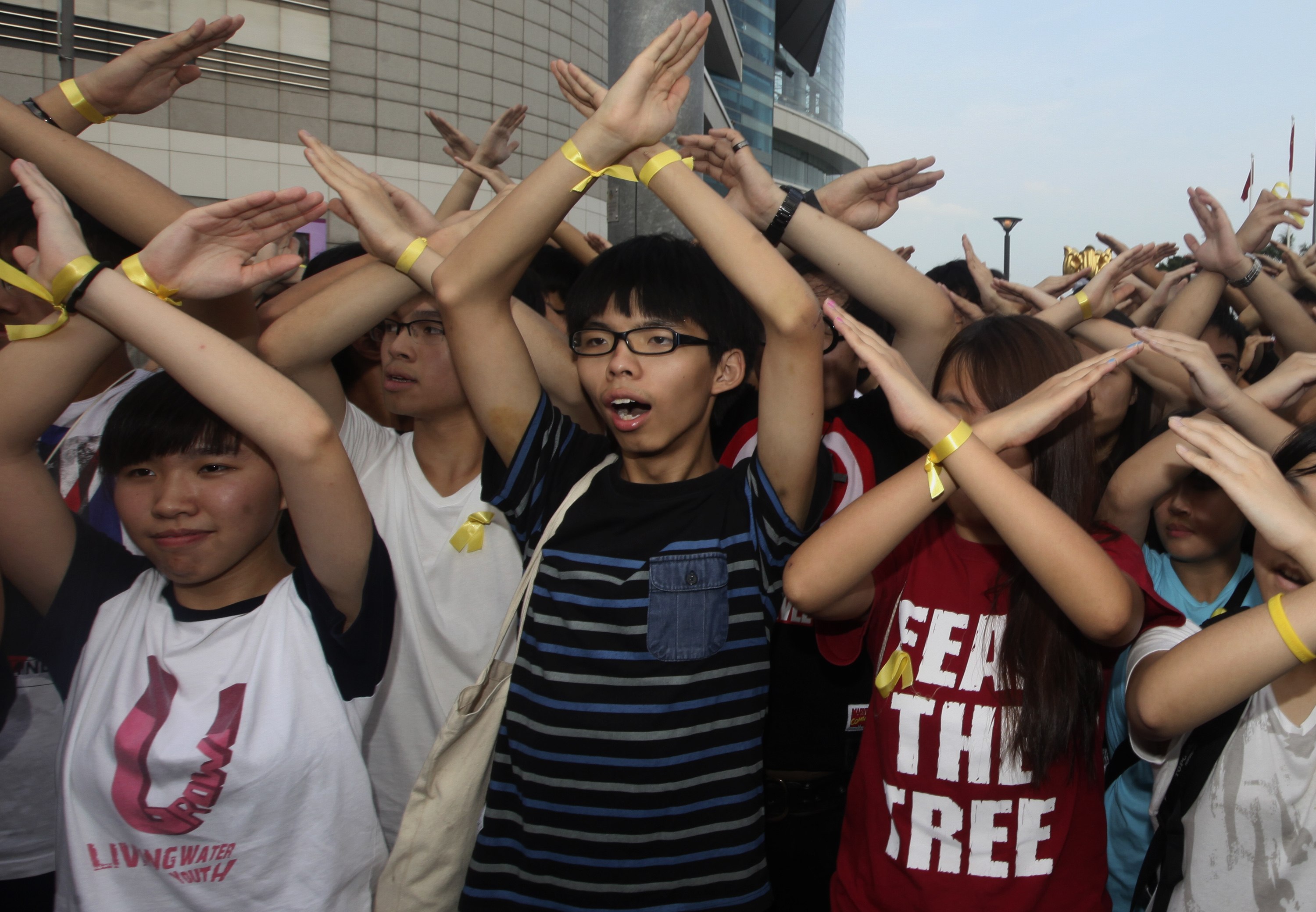To catch a glimpse of the ragtag group of students going eyeball to eyeball with the Chinese government, peek inside a room on the ninth floor of the Legislative Council building in downtown Hong Kong.
There, the exhausted, bleary-eyed student leaders who have brought three city business districts to a halt in their demand for direct democracy, huddle around a rectangular table in a windowless conference room. The floor is littered with backpacks and takeout boxes. Two computers stream local news footage of clashes that unfolded earlier across town.
During a two-hour stretch on the Friday night, confusion reigned in the makeshift command center used by the young men and women leading Hong Kong's protests, the city's largest in a half-century, and the biggest in China since the Tiananmen Square pro-democracy movement in 1989. That evening, protesters in Mong Kok — a working-class shopping district across Victoria Harbor — had been attacked by groups of men attempting to break up their camp. Now, the students were expecting a similar assault on their stronghold.



















With your current subscription plan you can comment on stories. However, before writing your first comment, please create a display name in the Profile section of your subscriber account page.